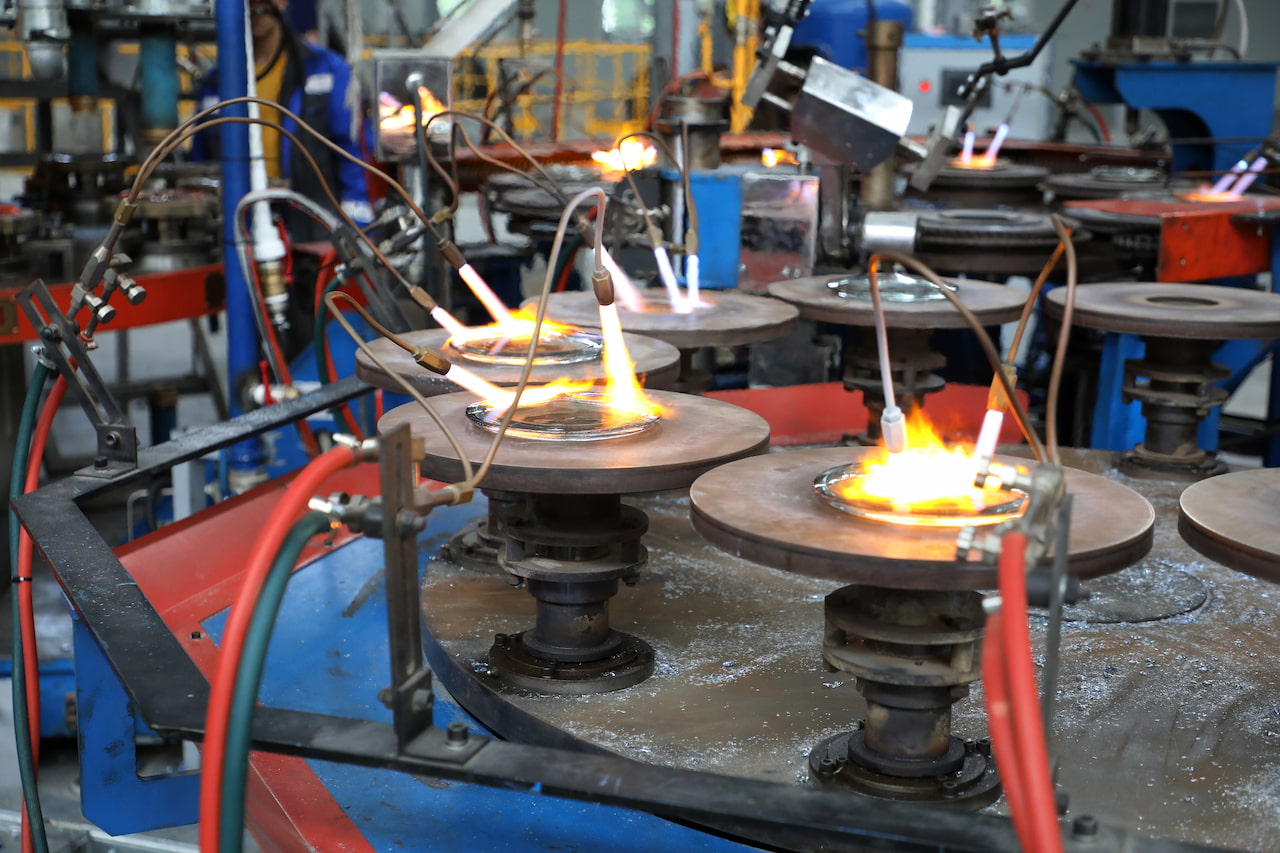During a working visit to Armavir on August 5, the governor visited the “Gornitsa” factory producing cast aluminum cookware.
Accompanied by a delegation, the governor inspected the production facility where currently only one furnace operates, capable of producing over 400,000 items monthly. The enterprise was established on the site of a previously unused scrap metal processing facility. The governor emphasized the importance of revitalizing and modernizing such territories rather than developing them.
“The region has created all necessary conditions for this, with various state support programs available. ‘Gornitsa’ company exemplifies this approach. You’ve established aluminum cookware production, becoming one of the country’s largest manufacturers. Despite challenging economic conditions, within just two years you’ve begun construction of a second plant for heat-resistant glass products,” noted the governor.
The governor added that soon the facility will launch Russia’s first import-substituting production, covering up to 50% of the domestic market.
The plant’s management decided to produce heat-resistant cookware following a meeting with the governor five years ago. At that time, the governor suggested expanding the existing metal, copper and aluminum cookware production to include pot lids, thereby completing the production cycle.
Through regional programs and preferential loans from the regional Industrial Development Fund, “Gornitsa” received over 466 million rubles. The company also participates in the federal “Labor Productivity” program under the “Efficient and Competitive Economy” national project.
The launch of Russia’s only heat-resistant glass products factory will enable annual production of over 3.7 million glass lids, along with microwave and oven-safe glass cookware. The new production line is scheduled to launch in August.
Armavir plant
The Armavir plant, located in the Krasnodar Krai region of Russia, is a significant industrial facility known for producing electrical equipment, particularly high-voltage products. Established during the Soviet era, it has played a key role in Russia’s energy infrastructure. Over the years, it has modernized to meet contemporary technological demands while maintaining its historical importance in the region’s industrial development.
Gornitsa factory
The Gornitsa factory, located in Russia, is a historic industrial site known for its production of textiles, particularly linen and cotton fabrics. Established in the 19th century, it played a significant role in the region’s economy during the pre-revolutionary and Soviet eras. Today, it stands as a reminder of Russia’s industrial heritage, though many such factories have declined or repurposed in the post-Soviet period.
Industrial Development Fund
The **Industrial Development Fund (IDF)** is a financial institution typically established by governments to support industrial growth, innovation, and infrastructure projects. Historically, such funds have played key roles in economic development by providing loans, grants, or equity investments to industries in need of modernization or expansion. The specific history of an IDF varies by country, but many were created in the mid-20th century to stimulate post-war industrialization or emerging market economies.
Labor Productivity program
The **Labor Productivity Program** refers to initiatives or policies designed to improve workforce efficiency and output, often implemented by governments or organizations. Historically, such programs emerged during industrialization and economic reforms, aiming to enhance economic growth through better training, technology, and management practices. Modern versions focus on innovation, automation, and employee well-being to sustain competitive productivity.
Efficient and Competitive Economy national project
The *Efficient and Competitive Economy* national project is a strategic initiative aimed at boosting economic growth, productivity, and global competitiveness in a country (specific nation may vary). Typically, such projects involve reforms in sectors like industry, technology, and trade, often drawing inspiration from successful models like Singapore or South Korea. Historically, similar programs have focused on innovation, deregulation, and investment in key industries to drive long-term economic sustainability.






